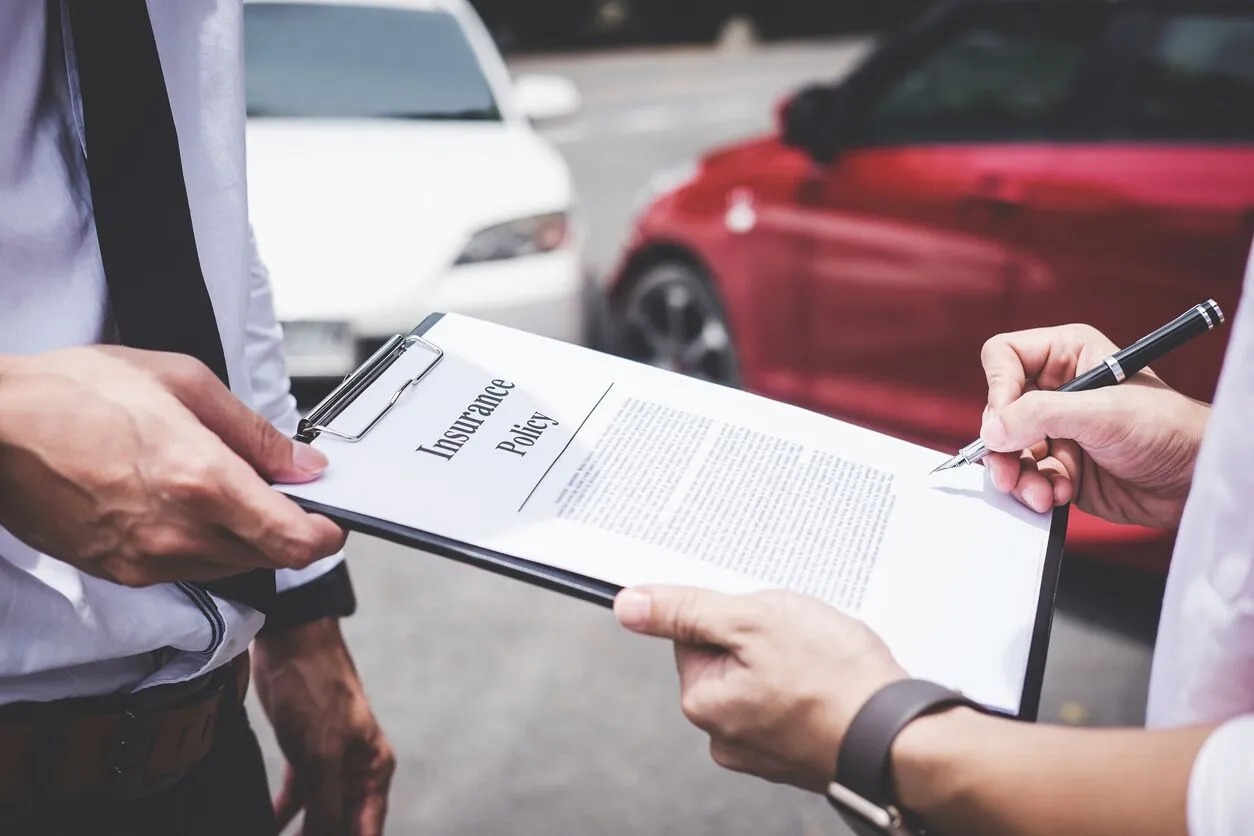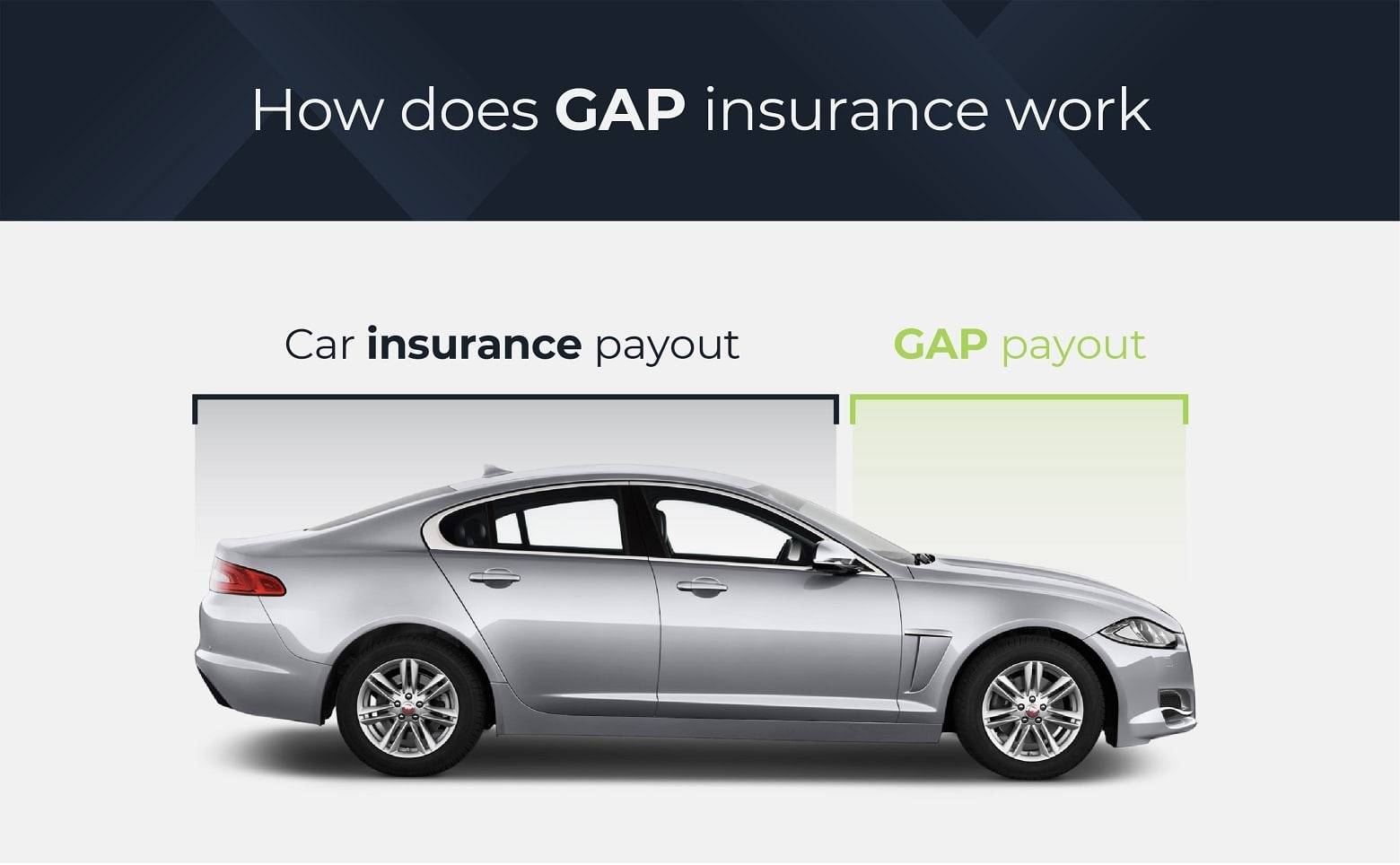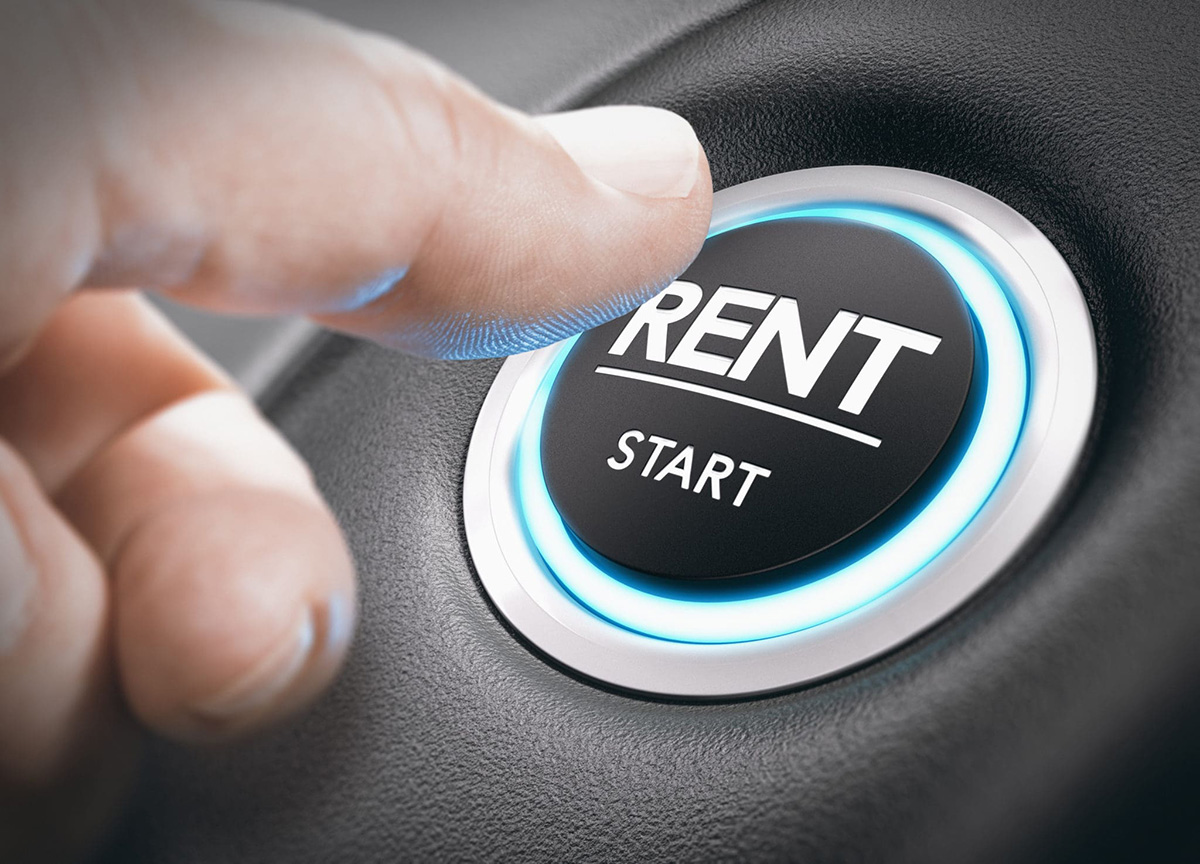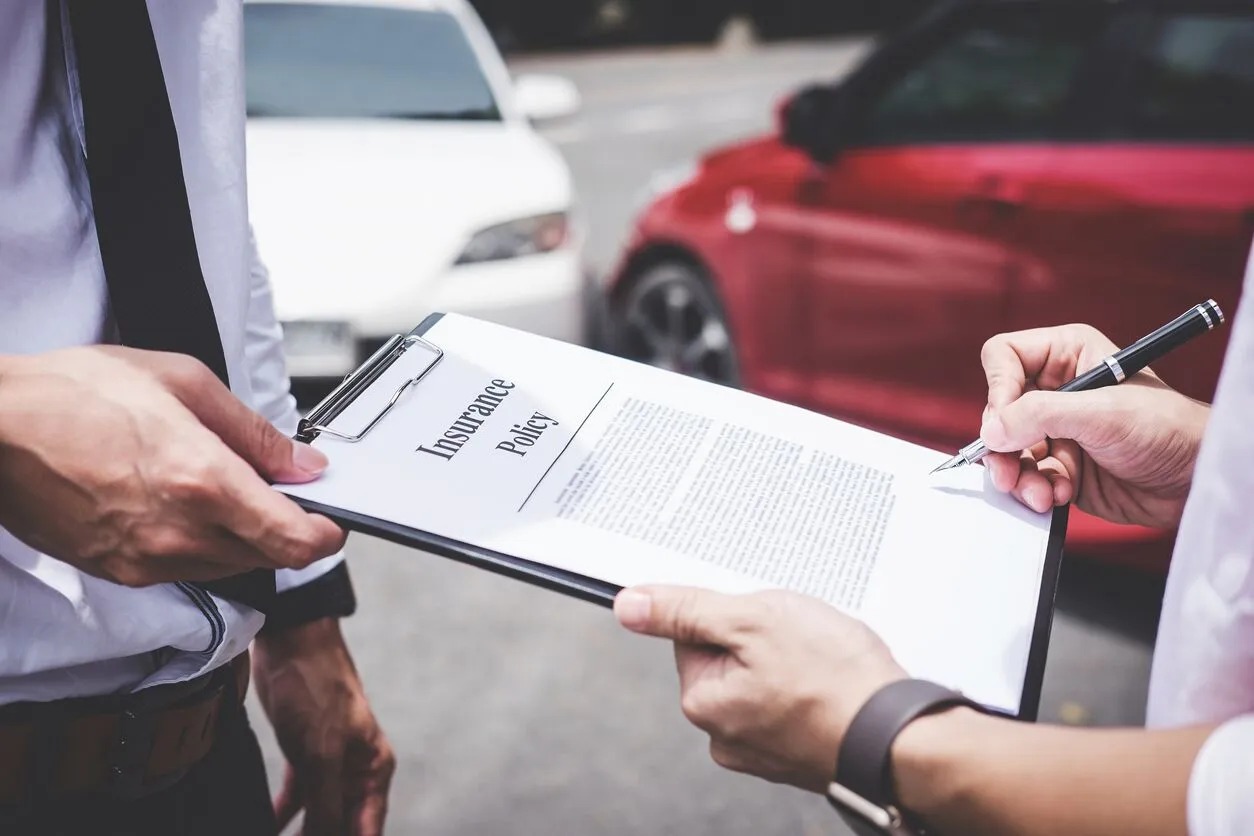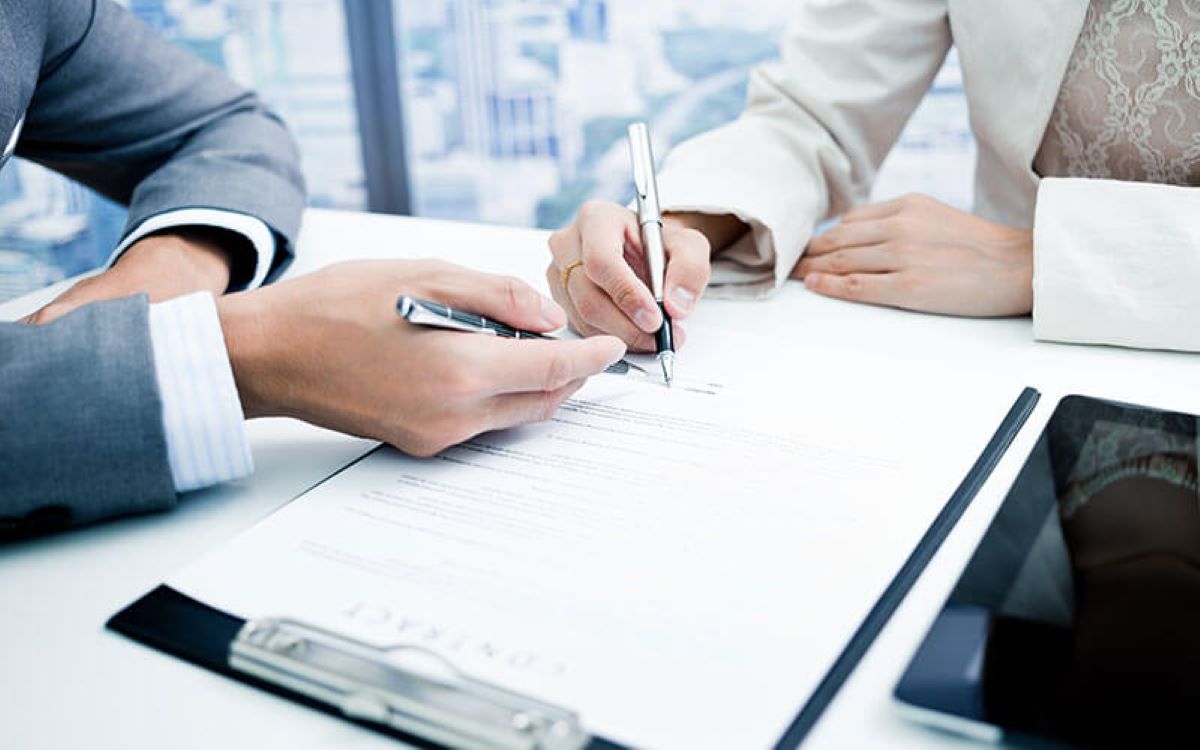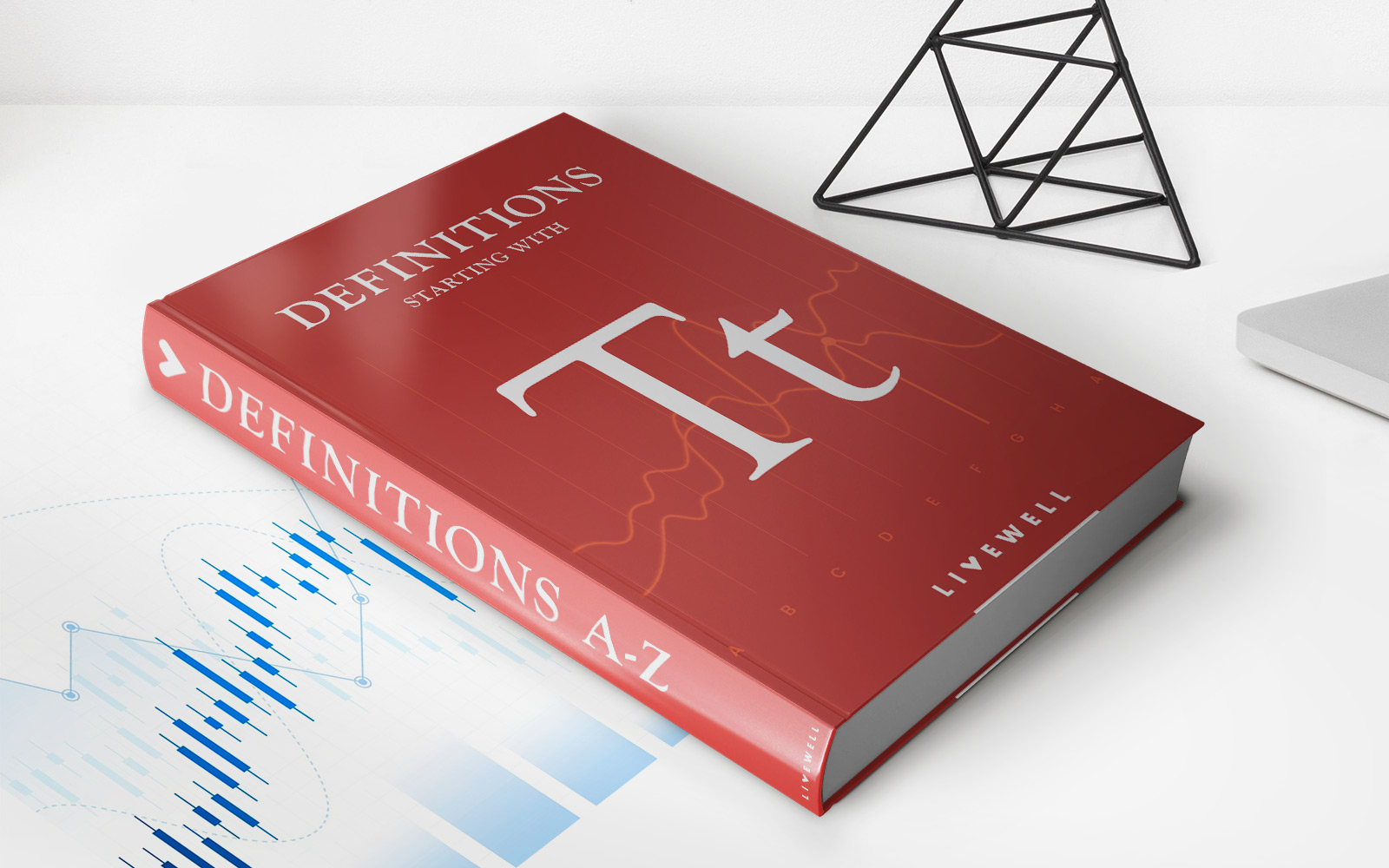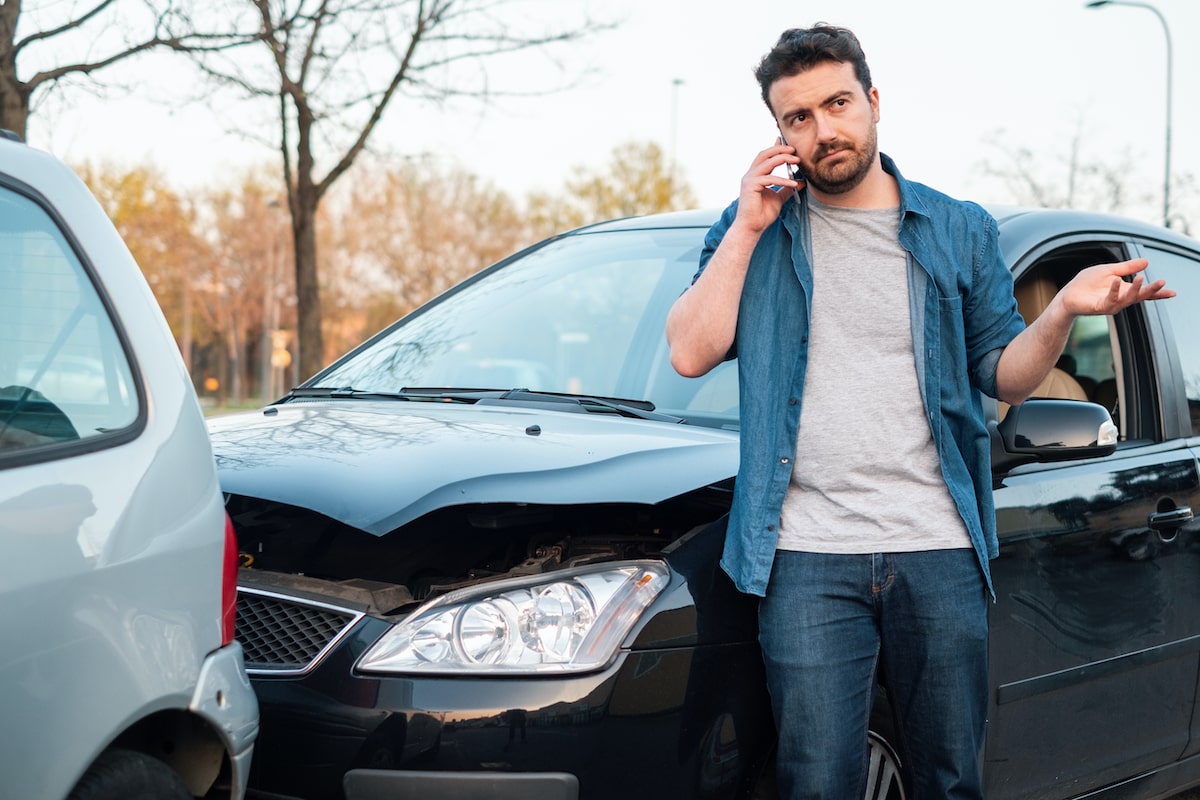

Finance
Someone Hit My Car; Whose Insurance Do I Call?
Published: November 16, 2023
Unsure of whose insurance to call after a car accident? Our finance experts have got you covered. Learn the steps to take and make the right insurance claim.
(Many of the links in this article redirect to a specific reviewed product. Your purchase of these products through affiliate links helps to generate commission for LiveWell, at no extra cost. Learn more)
Table of Contents
- Introduction
- Understanding the Situation
- Contacting the Authorities
- Documenting the Incident
- Exchange of Information
- Filing an Insurance Claim
- Determining Fault and Liability
- Contacting the At-Fault Driver’s Insurance
- Contacting Your Insurance Company
- Working with the Insurance Companies
- Seeking Legal Assistance
- Conclusion
Introduction
Being involved in a car accident can be a stressful and overwhelming experience. In addition to dealing with any physical injuries or damage to your vehicle, there’s also the question of whose insurance to call. When someone hits your car, it’s important to know the necessary steps to take and whom to contact for insurance purposes.
While each accident is unique, there are some general guidelines that can help you navigate this situation. This article will provide you with a comprehensive understanding of what to do when someone hits your car and whose insurance you should call.
It’s essential to remember that the actions you take immediately following an accident can significantly impact the outcome of any insurance claims or legal proceedings that may follow. Taking the proper steps not only ensures protection of your rights but also helps expedite the claims process.
In the sections that follow, we’ll discuss the steps you should take when involved in an accident, how to document the incident, and the appropriate parties to contact for filing an insurance claim.
It’s important to note that every accident is different, and the information presented here should serve as general guidance. If you are unsure about any aspect of the process or need legal advice, it’s always wise to consult with an attorney who specializes in personal injury and automotive law.
Understanding the Situation
When someone hits your car, it’s crucial to remain calm and assess the situation. Understanding the circumstances surrounding the accident is essential for determining the necessary steps to take and who to contact for insurance purposes.
Firstly, check for any injuries to yourself or passengers. If anyone requires immediate medical attention, call emergency services right away. The safety and well-being of everyone involved should always be your top priority.
Next, gather information about the accident. Take note of the time, date, and location of the incident. Assess the damage to your vehicle and the at-fault driver’s vehicle, if possible. This information will be essential when filing an insurance claim.
If it is safe to do so, move your vehicle to a secure location that doesn’t obstruct traffic. However, if there are significant injuries or concerns about vehicle safety, it’s best to leave the cars in place until the authorities arrive.
Once you have ensured everyone’s safety and assessed the situation, it’s time to contact the appropriate authorities.
In the event of a minor accident with no injuries and minimal damage, you may only need to report the incident to your local police station or to the non-emergency hotline. However, if there are injuries, significant damage, or the at-fault driver appears to be intoxicated or fleeing the scene, it is imperative to contact emergency services as soon as possible.
By reporting the accident to the authorities, you create an official record of the incident, which can be helpful when filing an insurance claim. The police will document the details of the accident, including statements from both parties and any witnesses.
Remember, it’s essential to avoid engaging in any confrontations or admitting fault at the scene of the accident. Leave the determination of fault to the proper authorities and the insurance companies involved.
Now that you understand the importance of assessing the situation and contacting the authorities, let’s move on to the next steps: documenting the incident and exchanging information.
Contacting the Authorities
After ensuring the safety of everyone involved in the accident and understanding the situation, it is crucial to contact the appropriate authorities. This step is vital for creating an official record of the incident, which will be instrumental when filing an insurance claim.
The specific authorities you need to contact may vary depending on the severity of the accident and local regulations. In most cases, it is advisable to notify the police, even for minor accidents.
If the accident is a minor fender bender with no injuries and minimal damage, you may be able to report the incident to your local police station’s non-emergency line. They will provide guidance on whether an officer needs to be dispatched to the scene.
For more serious accidents involving injuries, significant damage, or potentially intoxicated drivers, it is crucial to contact emergency services. Dial the emergency hotline in your area and provide them with all the necessary details and your location.
When contacting the authorities, it’s important to clearly and accurately describe the situation. Provide information such as the location of the accident, any injuries, and details about the vehicles involved.
Once the police or emergency services arrive at the scene, stay cooperative and provide them with all the information they request. This may include your identification, vehicle registration, and insurance details. Remember to remain calm, respectful, and avoid admitting fault or making any speculative statements.
The authorities will create an official accident report, documenting the details of the incident. This report will serve as a crucial piece of evidence when filing a claim with your insurance company.
Remember, the primary role of the authorities is to ensure public safety and document the facts of the accident. While they may make an initial determination of fault, it is ultimately up to the insurance companies and, if necessary, the courts to decide liability. Therefore, it is important to refrain from engaging in arguments or confrontations at the scene and leave the determination of fault to the proper channels.
Now that you’ve contacted the necessary authorities, the next step is to document the incident thoroughly.
Documenting the Incident
After contacting the authorities and ensuring everyone’s safety, it’s time to document the details of the accident. Proper documentation plays a crucial role when filing an insurance claim and can help support your case in case of any disputes.
Start by taking clear and comprehensive photographs of the accident scene. Capture images of the vehicles involved, the damage sustained, and any relevant road conditions or signage. Make sure to include different angles and perspectives to provide a complete visual record.
In addition to photographs, it’s important to write down your account of the accident while the details are fresh in your mind. Include information such as the time, date, and location of the incident, as well as the weather conditions at the time. Describe the sequence of events leading up to the accident and any other relevant details you can recall.
If there were any witnesses to the accident, try to obtain their contact information. Their statements may be crucial in supporting your claim and determining fault. Ask them to provide their names, phone numbers, and email addresses.
In some cases, there may be surveillance cameras in the vicinity of the accident. If you notice any, note their locations and inform the authorities. This information can be helpful in obtaining additional evidence to support your case.
Finally, keep all relevant documents related to the accident in a safe place. This includes the police report, any medical records or receipts for treatment, and any correspondence or documentation from insurance companies.
By thoroughly documenting the incident, you provide a strong foundation for your insurance claim and ensure that you have the necessary evidence to back up your case. This documentation will be invaluable in demonstrating the severity of the accident, the damages incurred, and the liability of the at-fault party.
Now that you have documented the incident, the next step is to exchange information with the other party involved in the accident.
Exchange of Information
After documenting the incident, it’s important to exchange information with the other party involved in the accident. This step is crucial for initiating the insurance claims process and ensuring a smooth resolution.
When exchanging information, be sure to obtain the following details from the other driver:
- Name: Get the full name of the other driver involved in the accident.
- Contact Information: Obtain their phone number and email address to facilitate communication.
- Insurance Information: Request the name of their insurance company and the policy number.
- Driver’s License Details: Note down their driver’s license number and state of issuance.
- Vehicle Information: Gather the make, model, and license plate number of the other driver’s vehicle.
It’s also important to provide your own information to the other driver. Share the same details mentioned above, including your name, contact information, insurance company, policy number, driver’s license details, and the information about your vehicle.
If there were any witnesses to the accident, exchange contact information with them as well. Witnesses can provide valuable statements and corroborate your account of the incident, helping to establish liability.
In addition to exchanging information, refrain from discussing fault or making any speculative statements about the accident. Leave the determination of fault to the authorities and insurance companies involved. It’s best to stick to factual information when discussing the incident with the other party.
Once you have exchanged information, it’s time to proceed with filing an insurance claim.
Note: The information provided here is for general guidance and may vary depending on the jurisdiction and specific circumstances. It is always advisable to consult with an attorney or insurance professional for guidance specific to your situation.
Filing an Insurance Claim
After an accident, filing an insurance claim is essential to seek compensation for any damages or injuries sustained. The process may vary depending on the insurance company and the specific policies involved. Here are the general steps to follow when filing an insurance claim.
1. Contact Your Insurance Company: Notify your insurance provider as soon as possible after the accident. Provide them with accurate and detailed information about the incident, including the date, time, and location, as well as the details of the other driver involved. Follow their instructions and provide any documentation they request.
2. Provide Supporting Documentation: Submit all relevant documentation to your insurance company, including photographs of the accident scene and vehicle damages, a copy of the police report, witness statements, and any medical records related to injuries. This documentation will help support your claim and provide evidence of the damages and liability.
3. Cooperate with the Insurance Adjuster: After filing your claim, an insurance adjuster will be assigned to investigate the accident and assess the damages. Cooperate fully with the adjuster, provide them with any additional information they request, and answer all questions truthfully. Remember to stick to the facts and avoid making any speculative statements about the accident.
4. Obtain Repair Estimates: Depending on the extent of the damage to your vehicle, the insurance company may require you to obtain repair estimates from approved repair shops. Ensure that you follow their guidelines and obtain multiple estimates to compare prices and services.
5. Keep Track of Expenses: Throughout the claims process, keep detailed records of any expenses related to the accident. This includes medical bills, vehicle repair costs, rental car charges, and any other out-of-pocket expenses you might incur. These records will be critical for reimbursement and calculating the total claim amount.
6. Review the Settlement Offer: After assessing the damages and liability, the insurance company will make a settlement offer. Review the offer carefully and consider consulting with a legal professional to ensure that it is fair and adequate. If you believe the offer is insufficient, negotiate with the insurance company or seek legal assistance to pursue a more favorable resolution.
7. Finalize the Claim: Once you accept a settlement offer or reach an agreement with the insurance company, the claim will be finalized. Be sure to obtain written confirmation of the settlement terms and any actions required on your part.
Remember, the process of filing an insurance claim can be complex, and the specific requirements may vary depending on your policy and the insurance company. Consider consulting with an attorney or insurance professional to ensure that you navigate the claims process effectively and maximize your potential compensation.
Now that you understand the process of filing an insurance claim, the next step is to determine fault and liability in the accident.
Determining Fault and Liability
When it comes to determining fault and liability in a car accident, insurance companies and authorities rely on various factors, including accident reports, witness statements, and applicable traffic laws. Understanding how fault is determined is crucial for ensuring fair compensation and resolution of your insurance claim.
Insurance companies typically employ adjusters who specialize in determining fault. These adjusters carefully review all available evidence, including police reports, photographs, witness statements, and any applicable traffic laws or regulations.
It’s important to note that fault is not always assigned solely to one party. In some cases, both drivers may share some degree of responsibility for the accident. Each insurance company evaluates the situation independently and may assign a certain percentage of fault to each party involved.
The concept of comparative negligence is often applied in these situations. Comparative negligence means that each party’s compensation is reduced by their percentage of fault. For example, if you are found to be 20% at fault, your compensation may be reduced by that percentage.
State laws also play a significant role in determining fault and liability. Some states have “no-fault” insurance laws, meaning that each party involved in the accident is responsible for their own damages, regardless of who caused the accident. Other states follow a “fault” system, where the at-fault driver’s insurance is responsible for covering the damages.
Keep in mind that fault determination is not always clear-cut. Disputes can arise between insurance companies and drivers regarding liability. In such cases, it may be necessary to seek legal assistance to ensure your rights are protected and to present a strong case for your claim.
It’s important to cooperate fully with your insurance company during the investigation and provide them with all requested information. If you disagree with the assigned percentage of fault or the final resolution, discuss your concerns with your insurance adjuster or consider seeking legal advice.
Remember, the determination of fault and liability is a crucial step in the insurance claims process. It can significantly impact the amount of compensation you are entitled to and the overall resolution of the claim. Therefore, understanding how fault is determined and your rights and responsibilities throughout the process is essential for a fair outcome.
Now that you understand the concept of determining fault and liability, we will explore the next step of contacting the at-fault driver’s insurance company.
Contacting the At-Fault Driver’s Insurance
After a car accident, if the other driver is determined to be at fault, it’s essential to contact their insurance company to initiate the claims process. This step is crucial to ensure that you receive compensation for the damages and injuries you have suffered.
When contacting the at-fault driver’s insurance company, gather all the relevant information from the accident, including the other driver’s contact details, their insurance policy information, and any supporting documentation you have gathered.
Call the insurance company and provide them with the necessary information about the accident, including the date, time, and location, as well as the details of the other driver and their insurance policy. Be prepared to answer any questions they may have about the accident.
The insurance company will assign an adjuster to handle your claim. This adjuster will contact you to gather additional information about the accident and your damages. Be cooperative and provide them with any requested documents or evidence, such as photographs, medical records, or repair estimates.
Keep in mind that the at-fault driver’s insurance company represents their interests, not yours. It’s important to be cautious when communicating with them. Stick to the facts of the accident and avoid admitting fault or making speculative statements that could be used against you.
If you feel overwhelmed or unsure about dealing with the insurance company on your own, consider seeking legal assistance. An attorney experienced in personal injury claims can help navigate the process, negotiate with the insurance company on your behalf, and ensure that you receive the compensation you deserve.
Remember that the at-fault driver’s insurance company may try to minimize the amount they have to pay out in a claim. They may dispute the extent of your injuries, the cost of repairs, or even attempt to shift the blame onto you. Stay vigilant and document all conversations and communications with the insurance company.
If you encounter any difficulties or disputes during the claims process, consult with an attorney to understand your rights and explore your options. They can help protect your interests and guide you through any legal proceedings if necessary.
Now that you have contacted the at-fault driver’s insurance, the next step is to inform your own insurance company about the accident.
Contacting Your Insurance Company
After being involved in a car accident, it’s important to contact your own insurance company, regardless of who is at fault. Even if you believe the other driver is entirely responsible for the accident, notifying your insurance company is a critical step to protect your interests and ensure a smooth claims process.
When contacting your insurance company, provide them with accurate and detailed information about the accident. This includes the date, time, and location of the incident, as well as the details of the other driver involved. Be prepared to answer any questions they may have about the accident or your injuries.
It’s essential to communicate with your insurance company as soon as possible after the accident, preferably within the time frame specified by your policy. Failure to promptly report the incident may result in delays or even denial of your claim.
During the conversation, your insurance company will guide you through the necessary steps for filing a claim. They will likely ask for documentation related to the accident, including any police reports, photographs of the scene and vehicle damages, and witness statements, if available.
Be honest and cooperative when communicating with your insurance company. Provide them with all requested information and documentation promptly. However, it’s important to stick to the facts of the accident and avoid speculating or admitting fault. Their primary role is to assess your claim and determine the coverage and benefits you are entitled to receive.
Your insurance company will assign an adjuster to handle your claim. This adjuster will review your claim, assess the damages, and possibly conduct further investigations, if necessary. Cooperate fully with the adjuster, answer their questions truthfully, and provide any additional information they require.
Keep in mind that your insurance company is there to protect your interests. They will work with you to ensure a fair resolution of your claim. If you encounter any difficulties or disputes during the claims process, consider seeking legal advice to better understand your rights and options.
It’s important to note that the specific requirements and procedures for filing a claim may vary depending on the insurance company and your policy. Familiarize yourself with the terms and conditions of your policy and consult with your insurance agent or a legal professional if you have any concerns or questions.
Contacting your insurance company promptly and providing them with accurate information is crucial for initiating the claims process and seeking compensation for your damages. Now that you have contacted your insurance company, you can work with both the at-fault driver’s insurance and your own insurance company to resolve the claim.
Working with the Insurance Companies
When involved in a car accident, you will likely need to work with both your insurance company and the at-fault driver’s insurance company to resolve your claim. Cooperation and effective communication with both parties are essential for a smooth claims process and fair compensation.
Here are some key points to consider when working with the insurance companies:
1. Provide Accurate Information: Ensure that you provide accurate and detailed information to both insurance companies. This includes the facts of the accident, the damages incurred, and any injuries sustained. Be honest and consistent in your statements throughout the process.
2. Understand Your Coverage: Familiarize yourself with the terms and conditions of your insurance policy. Understand the coverage and benefits you are entitled to, including any deductibles, limitations, or exclusions. This knowledge will help you effectively communicate and negotiate with the insurance companies.
3. Cooperate with the Adjusters: The insurance companies will assign adjusters to handle your claim. Cooperate fully with them, providing any requested documentation, such as photographs, medical records, and repair estimates. Answer their questions truthfully and promptly to help expedite the claims process.
4. Keep Detailed Records: Maintain a record of all communication with the insurance companies, including the names of the representatives you speak with, the date and time of the conversation, and a summary of what was discussed. This documentation can be valuable in case of disputes or misunderstandings later on.
5. Negotiate Fairly: If you disagree with the settlement offers from the insurance companies, don’t hesitate to negotiate. Provide any additional evidence or documentation that supports your claim for higher compensation. Consider seeking legal advice if you feel that your rights are not being adequately represented.
6. Be Patient and Persistent: Resolving a claim can take time, as the insurance companies need to evaluate the damages, liability, and other factors. Be patient throughout the process and follow up with the adjusters regularly for updates. If you encounter delays or difficulties, politely escalate the matter or seek guidance from a supervisor or manager within the insurance company.
7. Consider Legal Representation: If you believe your claim is not being handled fairly or if you encounter resistance from the insurance companies, it may be necessary to seek legal representation. An attorney experienced in personal injury and insurance law can help protect your rights, negotiate on your behalf, and guide you through any legal proceedings, if necessary.
Remember, the insurance companies have their own interests to protect. Be vigilant and advocate for yourself throughout the claims process. By working effectively with both insurance companies, you can increase the chances of obtaining a fair and satisfactory resolution to your claim.
Now that you understand how to work with the insurance companies, let’s explore the option of seeking legal assistance, if needed.
Seeking Legal Assistance
When dealing with a car accident insurance claim, there may be instances where seeking legal assistance becomes necessary. An attorney experienced in personal injury and insurance law can provide valuable guidance, protect your rights, and ensure that you receive fair compensation for your damages.
Here are some reasons why you may consider seeking legal assistance:
1. Complex Cases: If your case involves complicated legal issues, multiple parties, or extensive damages, an attorney can help navigate the complexities and ensure that all aspects of your claim are properly addressed.
2. Disputes and Denials: If the insurance company disputes liability or denies your claim altogether, an attorney can advocate for you and challenge their decision. They can gather additional evidence, negotiate with the insurance company, or even file a lawsuit if necessary.
3. Maximizing Compensation: Insurance companies may offer settlements that do not adequately cover your damages. An attorney can assess the true value of your claim, including medical expenses, vehicle repairs, lost wages, pain and suffering, and future damages, and work to secure a fair and comprehensive settlement on your behalf.
4. Legal Deadlines: Insurance claims are subject to specific legal deadlines, known as statutes of limitations. Failing to meet these deadlines can result in the loss of your right to seek compensation. An attorney can ensure that all necessary paperwork and filings are submitted correctly and within the required timeframe.
5. Legal Expertise: Attorneys specialized in personal injury and insurance law have a deep understanding of relevant laws, regulations, and court precedents. They can leverage this knowledge to build a strong case, negotiate with the insurance company, and, if needed, represent you in court proceedings.
6. Peace of Mind: Dealing with the aftermath of a car accident can be overwhelming, especially when navigating the complex insurance claim process. By entrusting your case to a knowledgeable attorney, you can focus on your recovery and have peace of mind knowing that your legal rights are being protected.
When choosing an attorney, look for someone with experience handling car accident and insurance claims. Consider their track record, reputation, and client testimonials. Schedule a consultation to discuss your case and ask about their fee structure, ensuring that it aligns with your needs and expectations.
Remember, seeking legal assistance is not an admission of fault or an aggressive approach. It is a means to ensure that your rights are protected, and you receive the compensation you are entitled to under the law.
Now that you understand the option of seeking legal assistance, it’s important to review the key points covered in this article and take appropriate action to address your car accident insurance claim.
Conclusion
Being involved in a car accident can be a challenging and stressful experience. When someone hits your car, knowing the appropriate steps to take and who to contact for insurance purposes is essential. Throughout this article, we have discussed the key actions to consider in such a situation.
Understanding the situation and contacting the authorities as necessary is the first step. Documenting the incident, exchanging information with the other driver, and filing an insurance claim are crucial to seek compensation for damages. Determining fault and liability is also an important consideration, as it impacts the claims process. Contacting both the at-fault driver’s insurance and your insurance company is vital for initiating the claim and working towards a resolution.
Cooperating with the insurance companies, negotiating fairly, and keeping detailed records can significantly improve the chances of a successful claim. However, in complex cases, disputes, or instances where legal expertise is required, seeking legal assistance is advisable. A knowledgeable attorney can guide you through the process, protect your rights, and help secure fair compensation.
Remember, the aftermath of a car accident can be overwhelming, but by following the appropriate steps and seeking the necessary assistance, you can navigate the insurance claim process with confidence. Keep in mind that the information provided in this article is for general guidance only, and it’s important to consult with legal and insurance professionals to address your specific circumstances.
We hope this article has provided you with valuable insights and empowered you to successfully handle the situation when someone hits your car. Stay safe on the roads, and remember to prioritize your well-being and that of others in any accident scenario.



